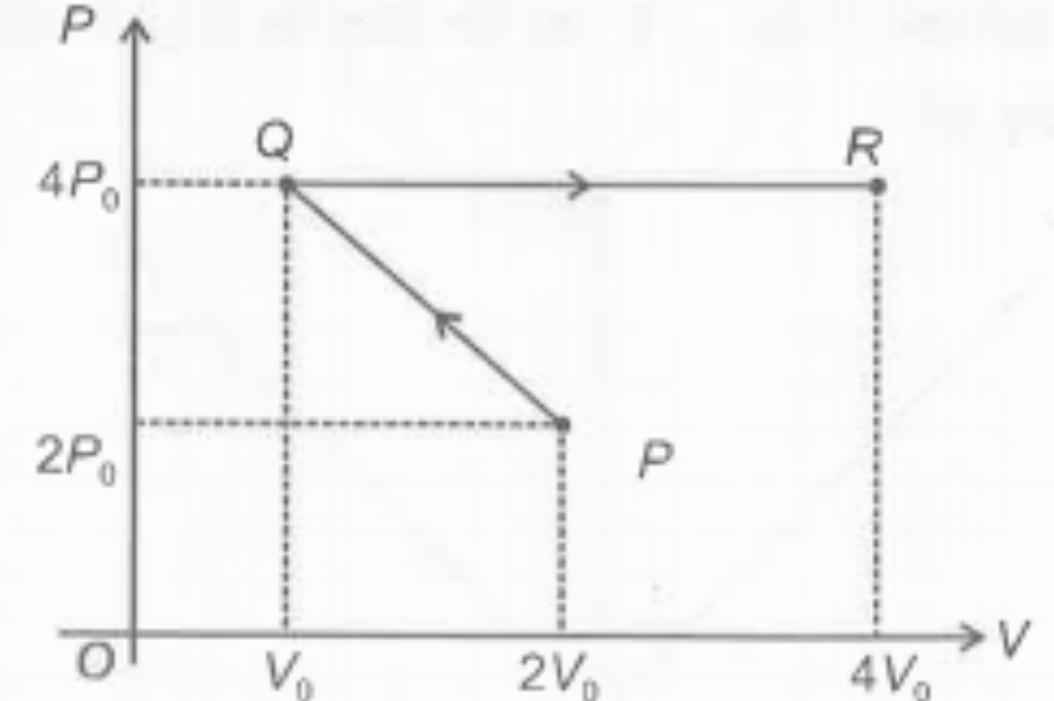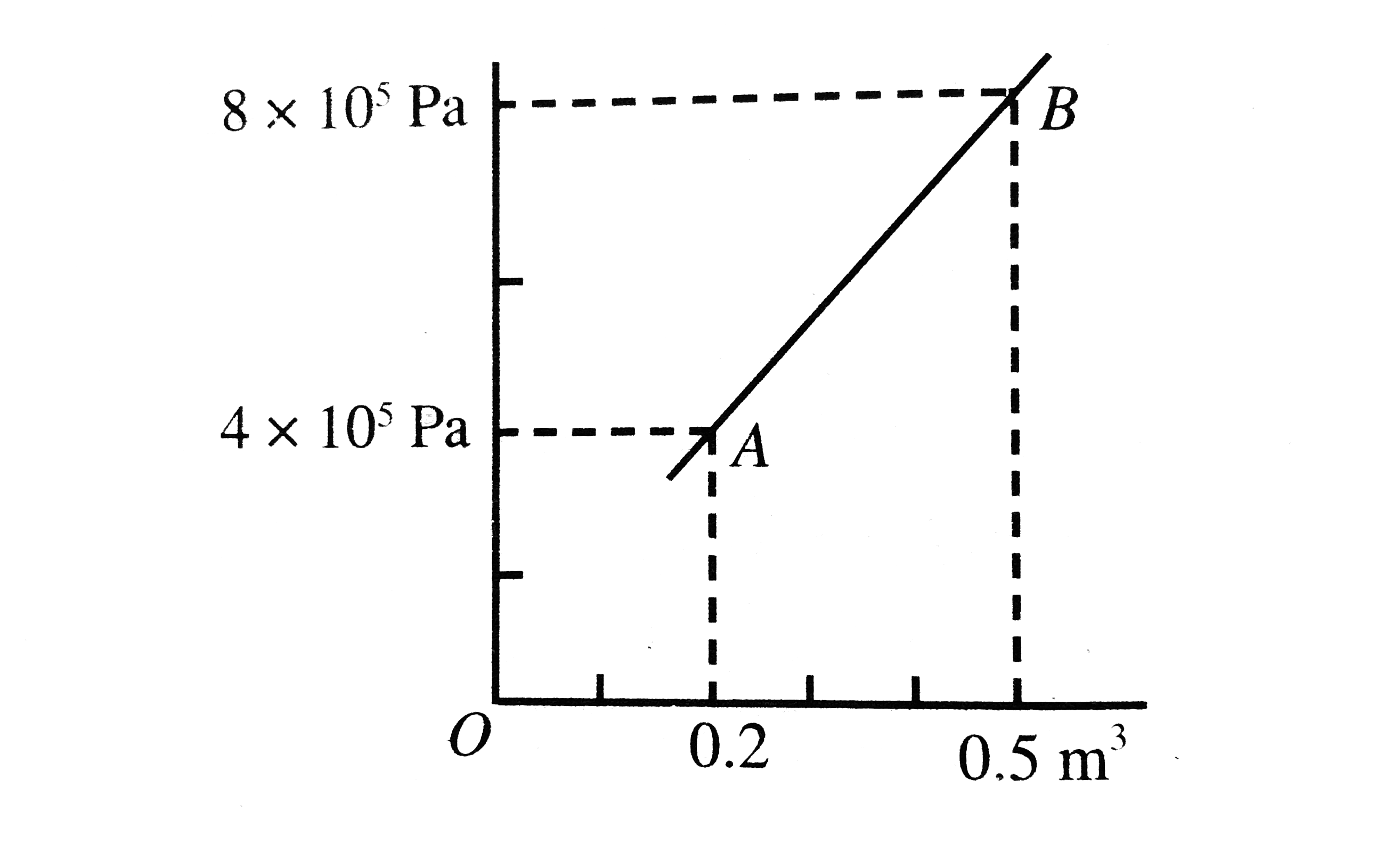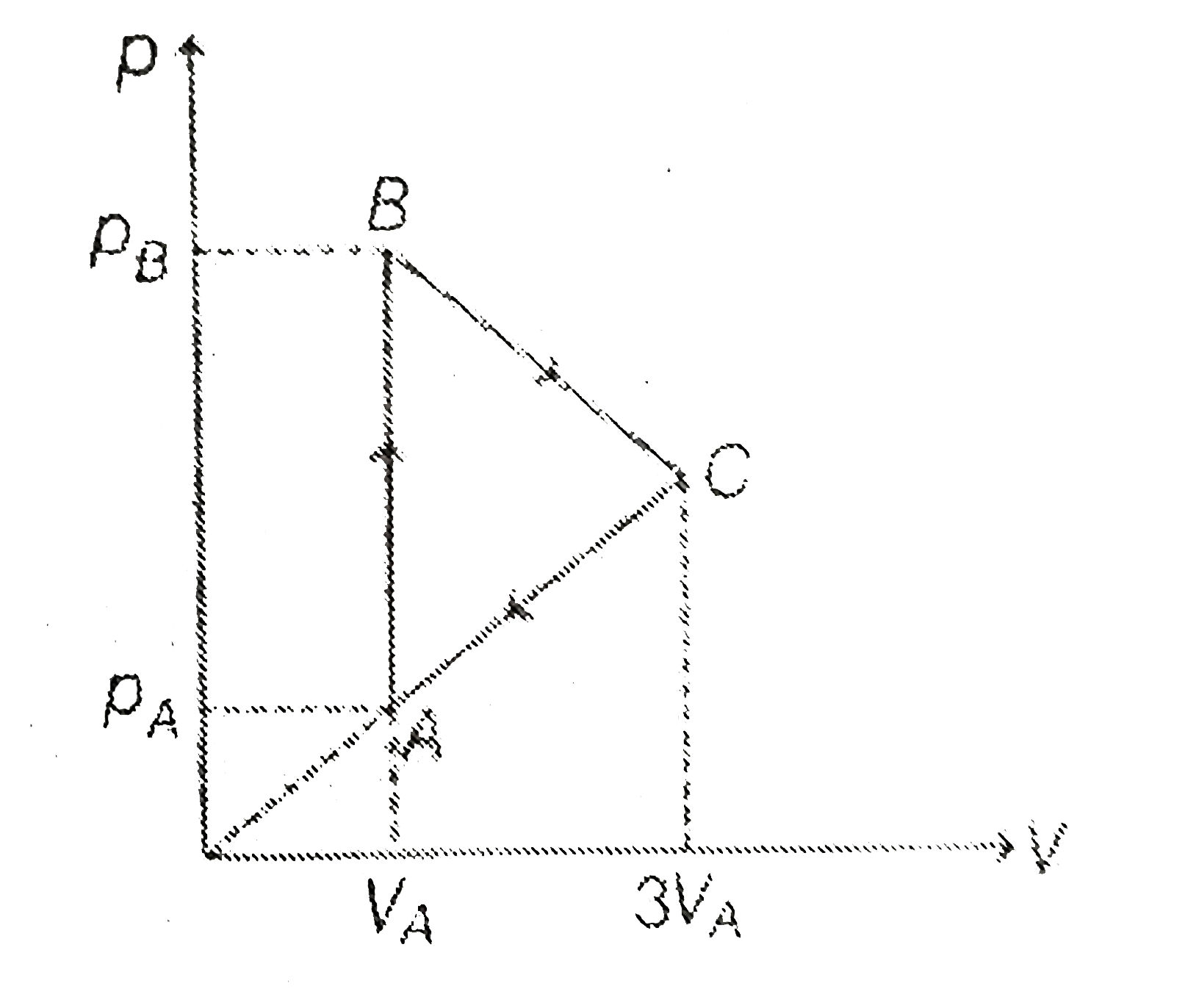In the proscess T∝ W, pressure of the gas increase from po to to Match the columns.
ColumnIColumnII(A)Temperature of teh gas(p)Pssitive(B)Volume of the gas(q)Nagative(C)work done by the gas(r)Two times(D)Heat supplies to the gas(s)Cannot say anything
The correct Answer is:(A→q,B→t,C→s,D→t)
To solve the problem and match the columns correctly, we will analyze each of the options in Column I and determine their corresponding values in Column II based on the given process where the pressure of the gas increases from p0 to T0.
1. Temperature of the gas (A):
- According to the ideal gas law, if pressure increases while the volume remains constant, the temperature must also increase.
- From the video transcript, it is mentioned that temperature is proportional to the square root of pressure. Therefore, if pressure increases, temperature also increases.
- If pressure becomes four times, temperature becomes two times.
- Conclusion: A matches with (r) "Two times".
2. Volume of the gas (B):
- The relationship between pressure and volume is given by Boyle's Law, which states that pressure is inversely proportional to volume when temperature is constant.
- As pressure increases, volume must decrease. Therefore, the volume of the gas decreases.
- Conclusion: B matches with (p) "Positive".
3. Work done by the gas (C):
- The work done by a gas is given by the formula W=PΔV.
- If the volume decreases (as established in the previous step), the work done by the gas will be negative because the gas is doing work on the surroundings.
- Conclusion: C matches with (q) "Negative".
4. Heat supplied to the gas (D):
- The heat supplied to the gas cannot be determined solely based on the changes in pressure and volume without additional information about the system.
- As stated in the video, we cannot conclude anything about the heat supplied to the gas.
- Conclusion: D matches with (s) "Cannot say anything".
Final Matching:
- A → r (Two times)
- B → p (Positive)
- C → q (Negative)
- D → s (Cannot say anything)
- According to the ideal gas law, if pressure increases while the volume remains constant, the temperature must also increase.
- From the video transcript, it is mentioned that temperature is proportional to the square root of pressure. Therefore, if pressure increases, temperature also increases.
- If pressure becomes four times, temperature becomes two times.
- Conclusion: A matches with (r) "Two times".
- The relationship between pressure and volume is given by Boyle's Law, which states that pressure is inversely proportional to volume when temperature is constant.
- As pressure increases, volume must decrease. Therefore, the volume of the gas decreases.
- Conclusion: B matches with (p) "Positive".
- The work done by a gas is given by the formula W=PΔV.
- If the volume decreases (as established in the previous step), the work done by the gas will be negative because the gas is doing work on the surroundings.
- Conclusion: C matches with (q) "Negative".
- The heat supplied to the gas cannot be determined solely based on the changes in pressure and volume without additional information about the system.
- As stated in the video, we cannot conclude anything about the heat supplied to the gas.
- Conclusion: D matches with (s) "Cannot say anything".
- A → r (Two times)
- B → p (Positive)
- C → q (Negative)
- D → s (Cannot say anything)
Topper's Solved these Questions
- THERMOMETRY THERMAL EXPANSION AND KINETIC THEORY OF GASESBOOK - DC PANDEY ENGLISHCHAPTER - THERMOMETRY THERMAL EXPANSION AND KINETIC THEORY OF GASESEXERCISE - Medical entrance gallary
30 Videos
- THERMOMETRY THERMAL EXPANSION AND KINETIC THEORY OF GASESBOOK - DC PANDEY ENGLISHCHAPTER - THERMOMETRY THERMAL EXPANSION AND KINETIC THEORY OF GASESEXERCISE - B medical entrance special format questions
14 Videos
- SUPERPOSITION OF WAVESBOOK - DC PANDEY ENGLISHCHAPTER - SUPERPOSITION OF WAVESEXERCISE - Level 2 Subjective
8 Videos
- THERMOMETRY,THERMAL EXPANSION & KINETIC THEORY OF GASESBOOK - DC PANDEY ENGLISHCHAPTER - THERMOMETRY,THERMAL EXPANSION & KINETIC THEORY OF GASESEXERCISE - Level 2 Subjective
9 Videos
Similar Questions
ColumnIColumnII(A)Gas A is ... and gas B is ...(p)Monoatomic, diatomic(B)pA/pBis(q)Diatomic, monoatomic(C)nA/nBis(r)>1(s)<1(t)cannot say anything
View SolutionFor a monotomic gas at temperature T, match the following columns.
ColumnIColumnII(A)Speed of sound(p)√2RT/M(B)RMS speed of gas molecules(q)√8RT/πM(C)Average speed of gas molecules(r)√3RT/M(D)Most probable speed of gas molecules(s)√5RT/3M
View SolutionThe straight lines in the figure depict the variations in temperature ΔT as a function of the amount of heat supplied Q is different process involving the change of state of a monoatomic and a diatomic ideal gas . The initial states, (P,V,T) of the two gases are the same . Match the processes as described, with the straight lines in the graph as numbered.
_E01_155_Q01.png)
Column-IColumn-II(A)Isobaric process of monoatomic gas.(p)1(B)Isobaric process of diatomic gas(q)2(C)Isochoric process of monoatomic gas(r)Minimum at section B(D)Isochoric process of diatomic gas(s)x-axis (i.e.'Q' axis)
View SolutionIn a process V∝T2, temperature of 2 moles of a gas is increased by 200K. Work done by the gas in this process will be
View SolutionAn ideal gas undergoes a process P→Q→R as shown in pressure (p) - volume (v) diagram.The work done by the gas is

View SolutionThe volume of a monatomic ideal gas increases linearly with pressure, as shown in Fig. Calculate (a) increase in internal energy, (b) work done by the gas and (c ) heat supplied to the gas.

View SolutionOne mole of a gas is enclosed in a cylinde in a cyclinder and occupies a volume of 1.5L at a pressure 1.5 atm. It is subjected to strong heating due to which temperature of the gas increase according to the relation T=αV2, where α is a positive constant and V is volume of the gas.
a. Find the work done by air in increasing the volume of gas to 9L.
b. Draw the P−V diagram of the process.
c. Determine the heat supplied to the gas (assuming γ=1.5).
View SolutionThree moles of an ideal gas at a pressure PA and temperature TA is isothermally expanded to twice its initial volume. It is then compressed at constant pressure to its original , volume. Finally the gas is compressed at constant volume to its original pressure PA
(a) Sketch the P-V and P-T diagrams for the complete process.
(b) Calculate the net work done by the gas, and net heat supplied to the gas during the complete process.
View SolutionA monoatomic gas at a temperature T has pressure P and heat energy per unit volume E. then
View SolutionA sample of ideal gas is taken through the cyclic process shown in the figure. The temerauture of the gas in state A is TA =200 K. In states B and C the temperature of the gas is the same.

Net work done by the gas in the process is
View Solution
